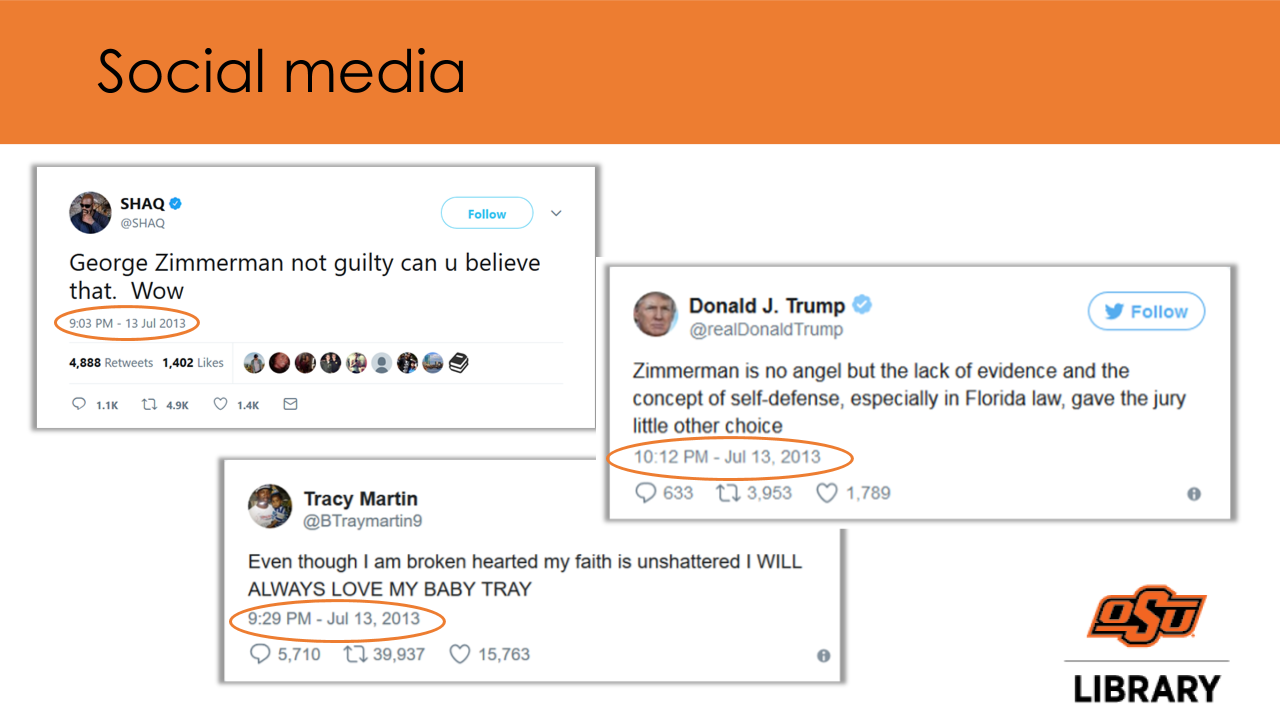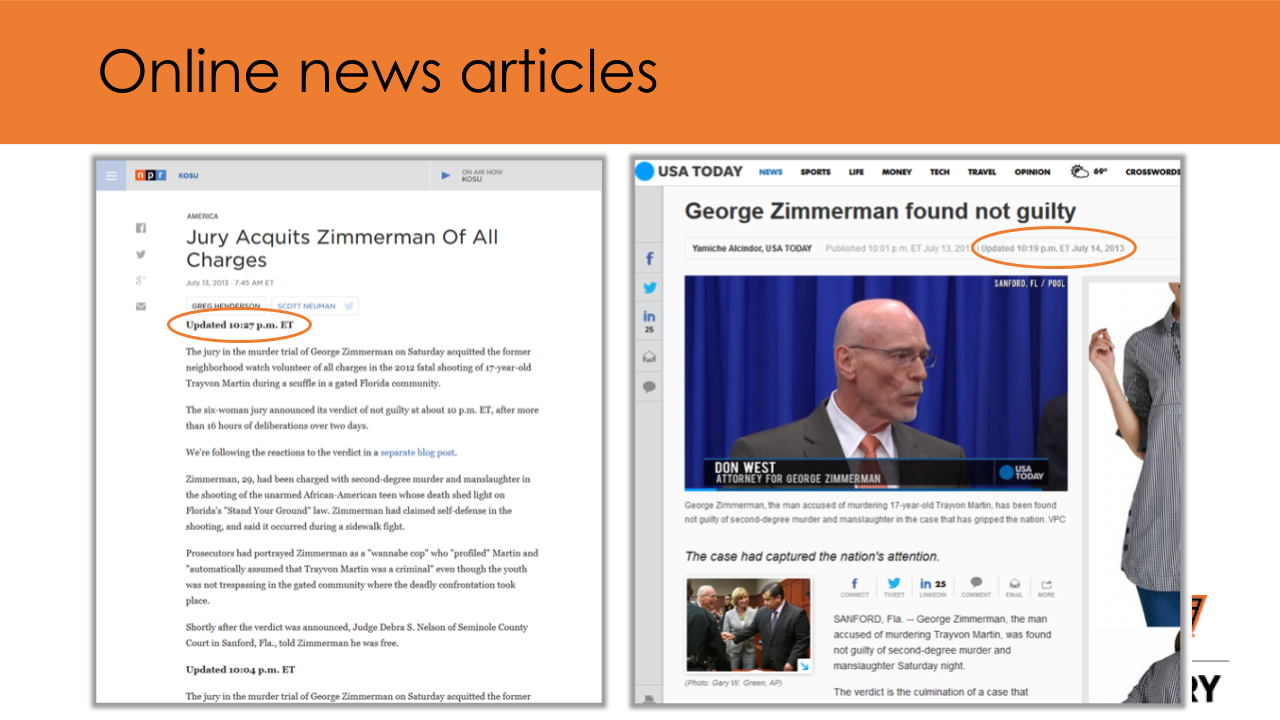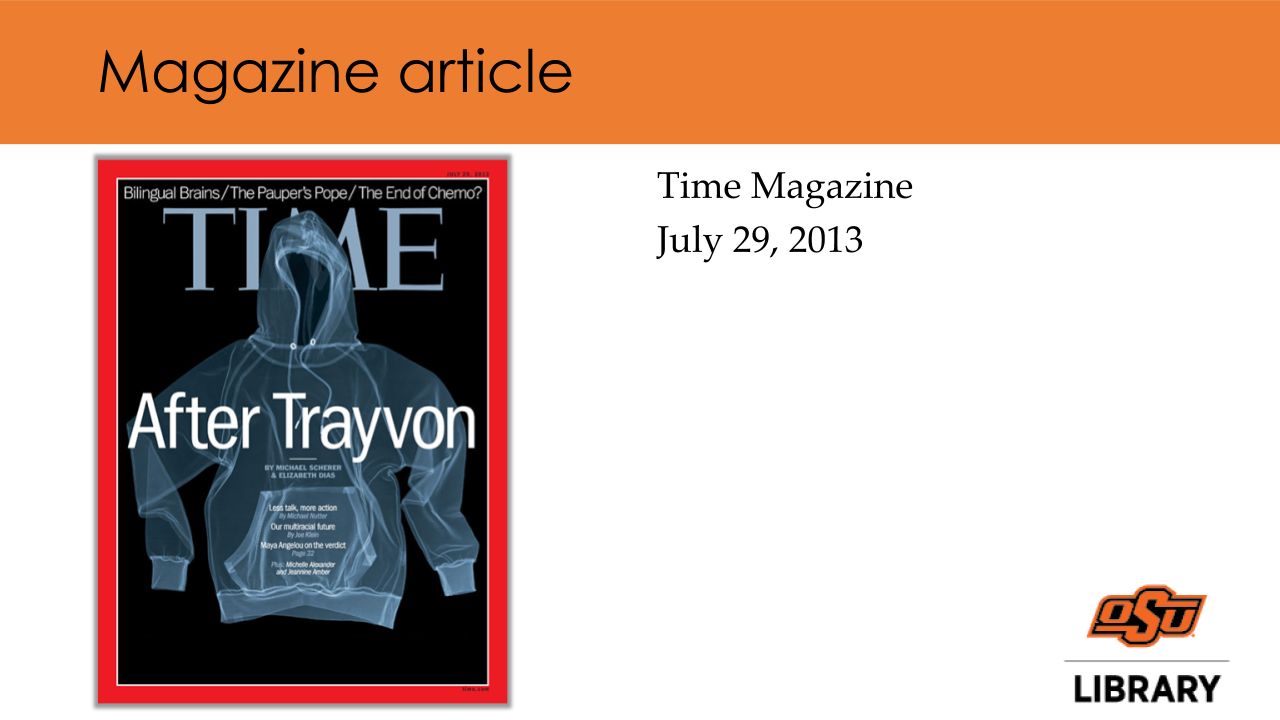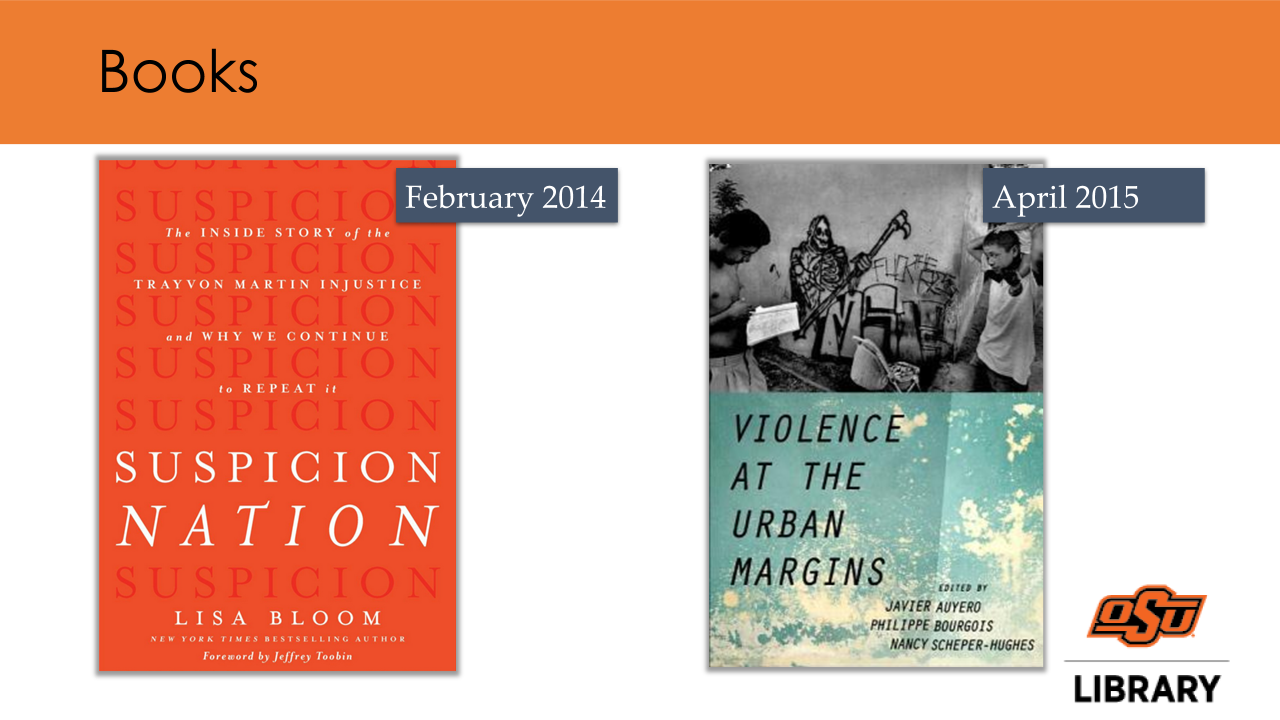Non-scholarly Sources
Popular Sources
Popular sources are written for a broad, general audience. They are intentionally written to be understood by as wide a variety of people as possible. Popular sources may need to compete for attention. They may include a colorful, flashy presentation with lots of pictures and graphics. Popular sources may incorporate advertisements, as well. Popular sources tend to be used for entertainment, or to help people stay informed regarding current events. Popular sources may also include opinion pieces. Writers of work published in popular sources rarely include a comprehensive list of references consulted as the piece of written; however, these references may be included in an indirect way. Work created by researchers and specialists may be published in popular sources. For instance, a researcher may publish a magazine article summarizing their latest project for a lay audience. What goals or research questions might be addressed through use of information published in popular sources?
Trade Sources
Trade sources are written by experts or scholars in a field for experts or scholars in a field. They may be colorfully presented, and will likely contain advertisements targeted to the field. Articles included in trade sources will have been edited (format, grammar, etc.) but will not have been peer-reviewed. The content will be focused on practice and will likely recount actual field experiences. For instance, a trade source might include an article about best practices for protecting yourself from the flu in a childcare environment. The article may include some references, but it is unlikely that a comprehensive reference list will be provided.
Social media can surface eyewitness reports by individuals who shared their thoughts on events as they took place. These resources may be subjective and limited in scope or point of view, but they may also represent a variety of voices when examined as a group.
News found on the internet can include reports found soon after the incident. These resources may include inaccuracies as the situation may still be developing and the resource updated as more information is made available. More clicks (i.e. money from ads) may result from interesting or breaking headlines.
Information in magazines may be shared in the days, weeks, and months after an event. Articles may be lengthier, and offer nuanced or in-depth analysis of the event which incorporates more voices and sources. The extended publication timeline facilitates investigation, fact-checking, writing, and editing.
Books can offer a synthesis of multiple sources. The original event may be only a portion of the material covered by the book. Information published in books may take more than a year to be shared after the date of the event.





